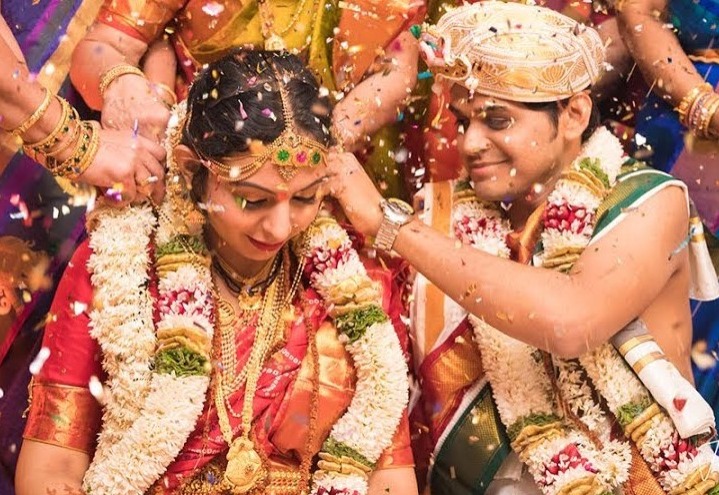Blog Details
South Indian Weddings (Kannada Madhwas Wedding in Karnataka)
Posted on 12, October 2022 05:32:17 PM

Welcome to EdigaMatchmaker
Rituals Before the Wedding
DEVARA SAMARADHANE: The marriage rituals are initiated through “ Punyaha Vachana” which includes pujas conducted to seek the blessings of various deities like Ganapathi, Varuna, Navagraha, and the family deity (Kula Devata). The “Naandi” deity who represents the family’s ancestors, is worshipped to seek their blessings.
HOOVILYA: The Mother Goddess is invoked through girls and women and her blessings are sought by propitiating them with food, gifts, and other accessories.
VARAPOOJE: Varapooje is usually performed a day before the wedding ceremony to welcome the bridegroom and his family As the Bridegroom arrives at the venue of the wedding with his family, friends, and the priest, they are welcomed by sumangalis by the Vedic rituals. Wedding invitations are exchanged; the details of the auspicious Lagna and muhurtham in which the bride will be given away are read out. Then, clothes, silverware, and other gifts are exchanged.
RITUALS CONDUCTED ON THE WEDDING DAY
SAMAVARTANE: The bridegroom performs the samavartane fire ritual (homa)to mark his entry into grihastha ashrama from brahmacharya. He seeks the blessings of Prajapati, Pavana, Agni, and Surya. Henceforth he is called a snathaka and will perform his duties to devas, Pitris, and society along with his wife.
GAURI POOJE: While the Bridegroom performs the Samavartana Homa and is taken for Kashi Yatra, the Bride performs “Gowri Pooja” under the guidance of elderly women according to tradition. Parvati, Shiva’s consort, obtained Shiva after long and arduous Tapas. The bride prays to the Divine Mother in her avatar as Gauri so that she may remain devoted to her husband and undaunted by trials and tribulations.
AKSHATAROPANA: The bride and groom sit facing each other, reciting mantras, and pouring handfuls of sanctified rice (moistened with a little ghee and milk) on each other’s heads. Rice symbolizes prosperity so that their married life has an abundance of yagna- dharma, and Keerthi (fame).
AKSHATAROPANA: The bride and groom sit facing each other, reciting mantras, and pouring handfuls of sanctified rice (moistened with a little ghee and milk) on each other’s heads. Rice symbolizes prosperity so that their married life has an abundance of yagna- dharma, and Keerthi (fame).
PANIGRAHANA: The groom now holds the bride’s hand for the first time and assumes responsibility for her welfare. The groom's upper garment and the girl's saree are knotted together to indicate an eternity together.
SAPTHAPADI: The groom holds his bride's hand and they walk around the sacred fire seven times making seven promises to each other with Agni as the witness. (Good health, strengthen physical, mental and spiritual powers, prosperity, happiness and harmony, good children, longevity in relationship, true and loyal to each other.)
GRUHA PRAVESHA: Finally, the bride leaves for her husband’s house to become part of a new family. Her new home is decorated with flowers and lights. Upon the threshold stands a container filled with rice and jaggery. The bride represents Mahalakshmi bringing joy, peace, and plenty with her to her new home.